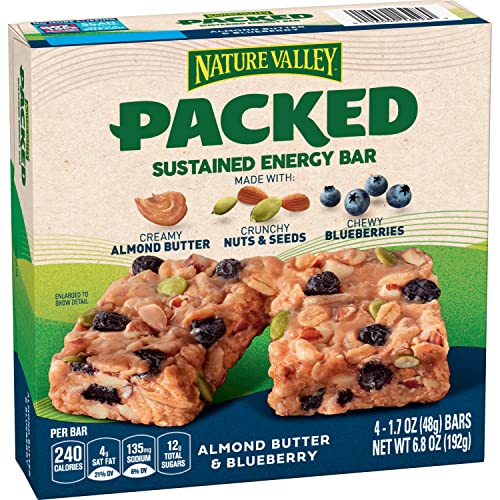Mastering Consistency in Eating Habit Changes: 7 Strategies for Success
Being consistent is one of the most difficult parts of building habits, but the right strategies can help.
Making eating habit changes isn’t exactly easy. It’s one thing to attempt to change but quite another to have those changes stick around. It’s not a matter of not wanting it enough (contrary to what some influencers on social media may tell you).
The main reason is that desire wanes, and motivation dwindles. It’s natural, so expect it to happen. The good news is that there are things you can do to circumvent those issues and help you make your eating changes into true habits. Here are six of the most effective strategies I use with my clients to promote consistency…and, therefore, results.
Embrace Discomfort as Growth:
During habit change, we ask our brains to do new things or things that conflict with our current beliefs and habits. That causes mental stress and discomfort. See, our brains like the status quo—even if it isn’t healthy for us or makes us unhappy. Our brains always root for the known entity (aka the “comfort zone”). So, think of your new habits as “growing pains.” Know that changing your habits will require getting out of your comfort zone, but it will be ok.
Maintain Focus on the Bigger Picture:
Your brain will push back at you during your habit change efforts (in fact, changing how you eat presents challenges multiple times per day). Don’t allow yourself to be derailed. Instead, ask yourself, “Is this a big deal in the grand scheme of things?” The answer is likely not. After all, typically, the discomfort isn’t going to be from an eating vs non-eating situation; it’s going to be more like swapping your regular yogurt for soy yogurt. You can do that. That level of discomfort will fade as your new habit gets stronger. And when your mind pushes back, you’ll recognize it and not let it get you off track.
Craft Plans Tailored to You:
Creating plans tailored to you involves building sustainable habits through small, incremental changes that seamlessly integrate into your routine. Sounds obvious, I know. But we have a tendency to want to go “all in” on our habit changes. We also tend to forget what our real lives are like when we make a habit change plan.
You’ve probably seen the meme saying, “I wish I was the kind of person I thought I was when I bought all this lettuce last week.” That’s what I’m talking about. A plan that you won’t ditch is one that slides into your life without requiring drastic changes to your routine (or your personality). It’s a plan that feels as doable on day three as it will on day 13 and day 103. One of the most effective ways to do this is to make small, incremental changes to your behavior. Having a plan tailored to you means you shouldn’t have to muster up a ton of willpower just to get through the day or week.
Additions Over Restrictions:
While it is natural to want to stop your “bad” habits cold turkey, or at least try to inhibit them, research indicates that putting your efforts into learning new behaviors is a more effective way to go. So, instead of constantly noodling over what you’re trying not to do, channel your thoughts on what you are trying to do. Bonus: it feels more positive and pleasant.
From Control to Management Mindset:
The need to shift one’s mindset in various ways is probably the biggest block to changing habits of any kind. In order to do that, we need to consciously think of new thoughts and practice thinking about those thoughts. When I coach people who are working on eating habit changes, I ask them to think of themselves as managing situations and challenges instead of trying to control them.
When we try to control, we’re hanging on tightly and can be inflexible, which means when mistakes happen, we view them as failures and fall apart. But if we view things as managers, we tend to be more flexible in the face of missteps and look at them as situations that need solutions and opportunities to make tweaks—and we’re less likely to give up as a result.
Progress Tracking for Consistency:
It’s natural to want to skip this part of the habit change process. Tracking sounds so boring. However, it doesn’t need to be complicated—and can bring benefits you probably haven’t thought of. Primary among those: tracking provides data. Whether done on an app (there are lots of habit tracking apps available, many free) or a simple check mark on the calendar, if you see that you’re only getting your new habit done 3 or 4 times out of every seven days, chances are there is a problem with your plan somewhere.
Aiming to hit consistency at 80-85% is about right for learning or doing something new. If it’s less than that, you may have made it too complicated or haven’t thought through potential challenges that make it hard to get it done. Hitting it 100% right out of the gate means you can probably bump up the difficulty a bit. Secondly, tracking is also reinforcing. Not breaking a streak or seeing an entire month of days with a check mark on them is motivating! Look at you killing it!
Success in the Journey:
Success in habit change is in the process of learning the habit. The definition of a habit is something that you do daily or regularly, no? So, doesn’t it make sense to view your success in the same way? The idea here is that consistent effort is success. If your idea of success is only the prize at the end—the outcome of your efforts—then you will be waiting quite a while to feel successful (or you might never get there).
Habits take time to solidify. And if you have to tweak your plan, they’ll take even longer. Instead, try characterizing success as being consistent with whatever small steps you take on your habit-change path. That way, you can feel good about yourself and your changes all along the way. And that reinforces consistency, which is what makes a true habit.
- Horváth, K., Nemeth, D. & Janacsek, K. (2022). Inhibitory control hinders habit change. Sci Rep 12, 8338.
- Wilson, R.C., Shenhav, A., Straccia, M., Cohen, J. (2019). The Eighty Five Percent Rule for optimal learning. Nat Commun 10, 4646.




















Comments
Join The Conversation...